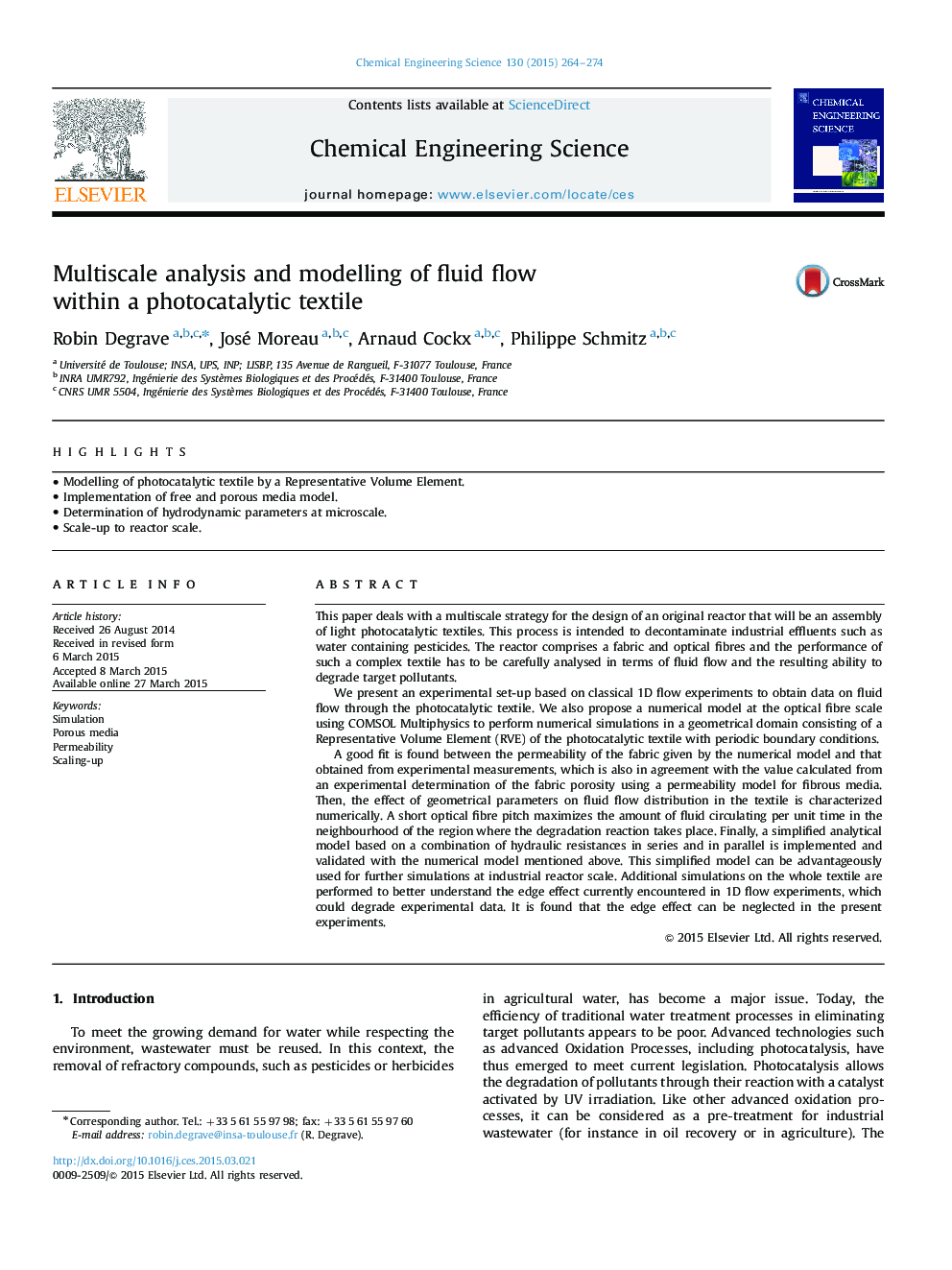| Article ID | Journal | Published Year | Pages | File Type |
|---|---|---|---|---|
| 6590035 | Chemical Engineering Science | 2015 | 11 Pages |
Abstract
A good fit is found between the permeability of the fabric given by the numerical model and that obtained from experimental measurements, which is also in agreement with the value calculated from an experimental determination of the fabric porosity using a permeability model for fibrous media. Then, the effect of geometrical parameters on fluid flow distribution in the textile is characterized numerically. A short optical fibre pitch maximizes the amount of fluid circulating per unit time in the neighbourhood of the region where the degradation reaction takes place. Finally, a simplified analytical model based on a combination of hydraulic resistances in series and in parallel is implemented and validated with the numerical model mentioned above. This simplified model can be advantageously used for further simulations at industrial reactor scale. Additional simulations on the whole textile are performed to better understand the edge effect currently encountered in 1D flow experiments, which could degrade experimental data. It is found that the edge effect can be neglected in the present experiments.
Related Topics
Physical Sciences and Engineering
Chemical Engineering
Chemical Engineering (General)
Authors
Robin Degrave, José Moreau, Arnaud Cockx, Philippe Schmitz,
